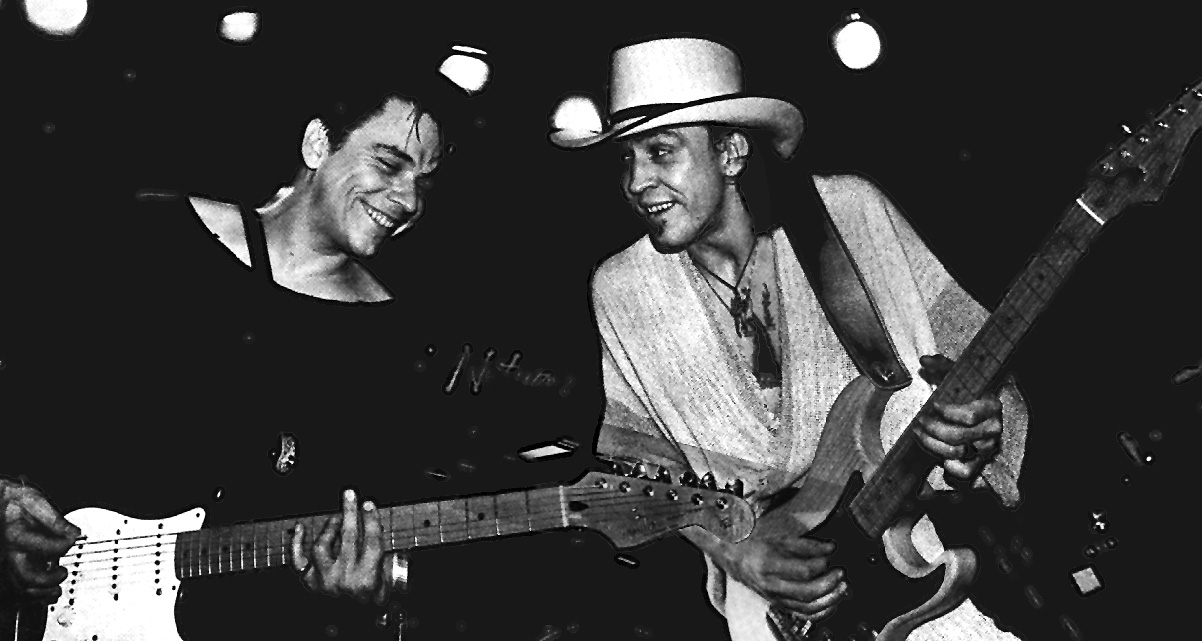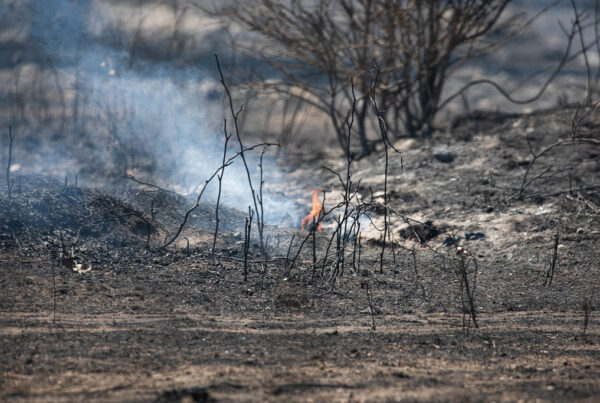In the 1960s, most of the music on the radio was inspired by The Beatles and emerging psychedelic rock. But two brothers from the Dallas area were inspired by the guitar playing they heard in small blues clubs.
A new documentary, “Jimmie & Stevie Ray Vaughan: Brothers in Blues” follows them from the Oak Cliff neighborhood to the top of the music charts. Producer and director Kirby Warnock told the Texas Standard he drew in part on his own memories of watching some of the Vaughan brothers’ earliest performances.
This transcript has been edited lightly for clarity:
 Texas Standard: Why did you want to tell this story?
Texas Standard: Why did you want to tell this story?
Kirby Warnock: I have always been fascinated by the story of Jimmie and Stevie Ray Vaughan, ever since I first saw them back in 1978, when I was editor of a magazine called Buddy Magazine – it was a Dallas music magazine named after Buddy Holly. But I saw them play in Dallas at some clubs here and were just completely blown away by them. And the more I dug into it, I just thought they had probably the most amazing story.
These two brothers came from a little bitty cracker box tract home in Oak Cliff and went to the very top of the rock and roll heap, and all the famous rock stars of that era back in the 70s wanted to play with them, you know, from Eric Clapton to David Bowie to Carlos Santana.
Also, they did not have to pack up and move to New York or L.A. to get signed to a record deal. The Vaughan brothers stayed in Texas and kept playing little clubs around here, and eventually both got a record deal and both did very well.
» MORE: A new collection of artifacts paints a more nuanced picture of Stevie Ray Vaughan
What was it about the music in particular that grabbed your attention so much?
The first one I saw was Jimmie and the Fabulous Thunderbirds, and I went to see them at the Texas Chili Parlor, the original one in downtown Dallas. And I was just blown away because, one, they didn’t sound like anything that was on the radio at that time. And two, they played a really pure, clean style.
Jimmie just plugged a guitar straight into an amplifier, didn’t have any pedals, any effects or anything like that. And they just got such an incredible sound out of just their hands, using their hands to bend the strings and things like that. Why didn’t the whole world know about these guys?
Could you talk a little bit about the synchronicity or the chemistry between the brothers themselves?
Well, the first thing is that when I was watching them play back then, it seemed like whenever one of them was playing, the other one would be there at the gig backstage or something. They both were very supportive of each other. There was never a hint of animosity between them that I saw, and they just were very supportive of each other.
And they always had said to me that one day we want to make a record together. And they got the chance to do that “Family Style,” which was the last recording just Stevie made. And we have in the film Nile Rodgers, who produced that album talking about it and just saying that he didn’t see a hint of animosity and he saw a lot of love between them.
Jimmie was the older brother, and he went first. And Stevie learned to play guitar from watching his older brother. And Stevie told me in one of my interviews that Jimmie taught him the first song he ever learned on the guitar, which was “Wham” by Lonnie Mack. And in the film, Eric Clapton says, ‘I think you have to ask yourself, would Stevie be playing at all if it weren’t for Jimmie?’
I saw them both do stuff with the guitar that I just couldn’t believe, you know? And so they had that immense talent. But they also were committed. They were very committed to what they’re doing, or they wouldn’t have dropped out of school to pursue a musical career.















